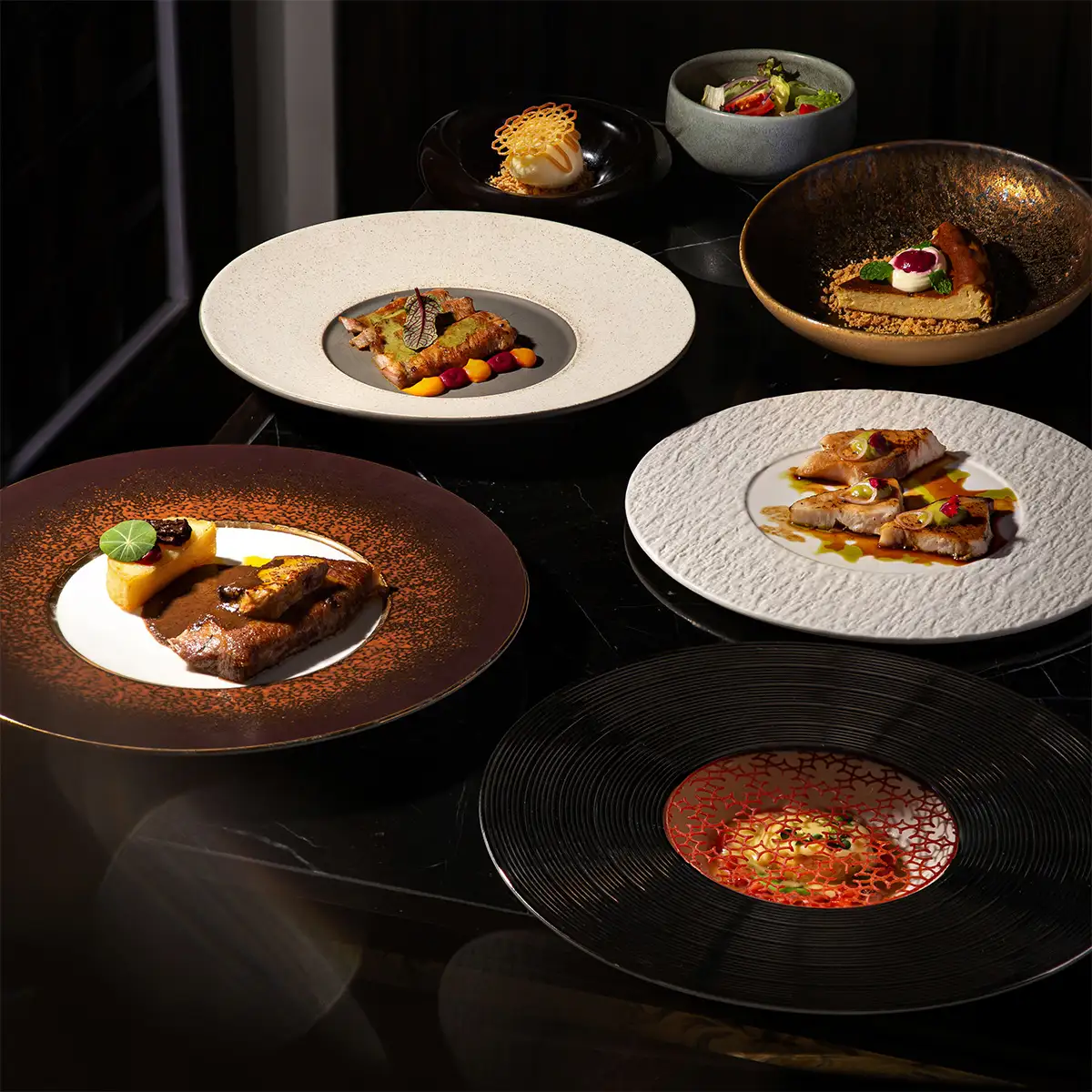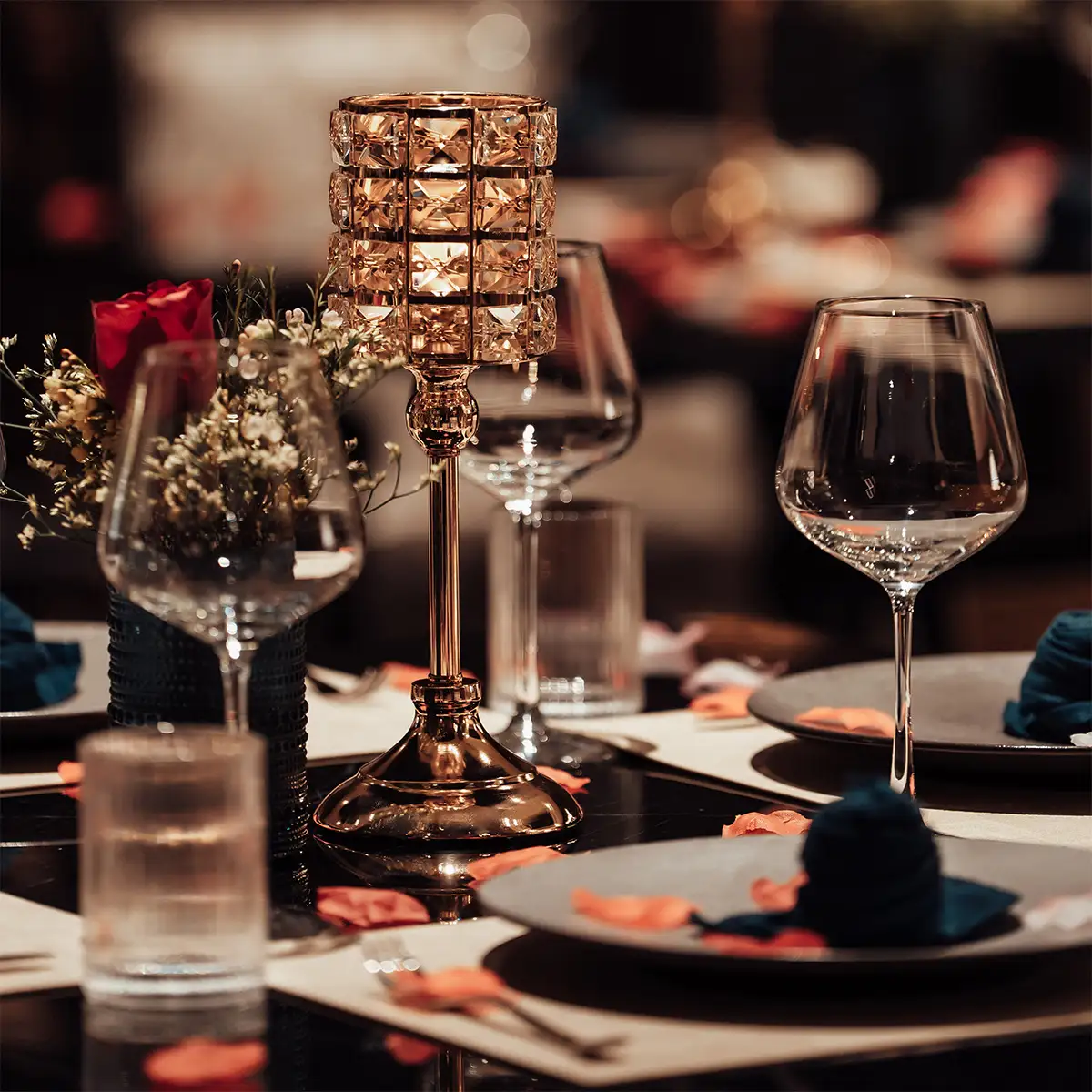- 1. High-end fine dining ingredients: The pillars of gastronomic artistry
- 2. Criteria for selecting fine dining ingredients: The pursuit of perfection
- 3. The role of ingredients in the fine dining experience: A multi sensory symphony
- 4. Introducing Moca Dining restaurant: Where ingredient integrity meets culinary innovation
In the elevated realm of fine dining, the quality and distinction of a dish are unequivocally determined by its foundational elements: the ingredients. These are not mere components but the very essence that dictates the gastronomic journey. The meticulous selection and artful utilization of ingredients for a fine dining restaurant present a continuous, yet rewarding, challenge. This article aims to provide a comprehensive overview of fine dining ingredients, delve into the stringent criteria for their selection, and proudly illustrate how Moca Dining champions these principles.
1. High-end fine dining ingredients: The pillars of gastronomic artistry
The pursuit of culinary perfection begins with sourcing exceptional fine dining ingredients. Each category, from the ocean's bounty to the earth's rarest treasures, demands specific knowledge and reverence.
Seafood: The ocean's exquisite offerings
- Types of fresh seafood: The fine dining repertoire often features luxurious selections such as succulent Lobster, majestic King Crab, rich Salmon, pristine Tuna, prized Abalone, and delicate Scallops.
- Origin, characteristics, preparation, and preservation: The provenance of seafood is paramount. For instance, wild-caught salmon from specific cold-water regions is preferred for its flavor and texture. Characteristics like firmness, clarity of eyes (for whole fish), and oceanic scent indicate freshness. Preparation methods aim to enhance natural flavors – from gentle poaching of lobster to precise searing of scallops. Preservation involves immediate chilling or flash-freezing at the source to maintain peak quality.
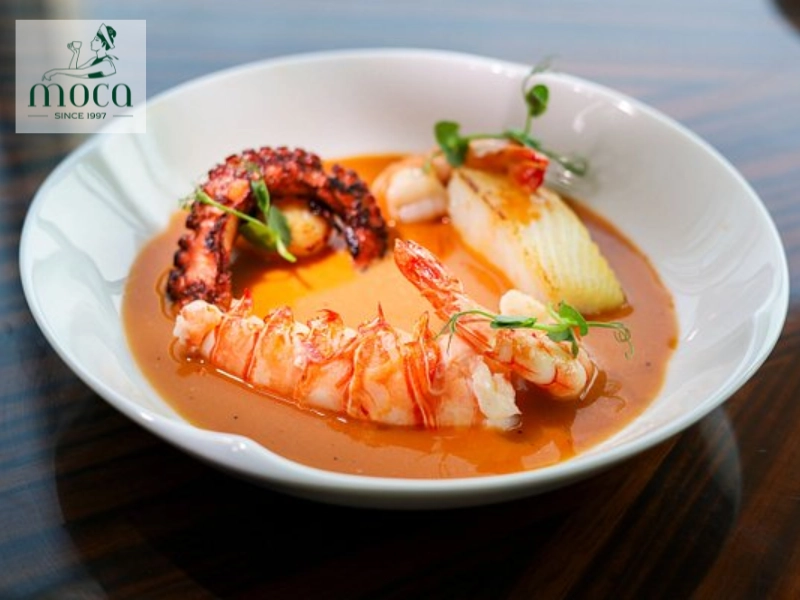
From sea to plate — fine dining seafood, sourced with care and served with elegance.
Meat: Terrestrial delicacies of distinction
- Types of high-end meat: Esteemed varieties include the exquisitely marbled Wagyu beef, tender spring Lamb, delicate Veal, and flavorful free-range Wild Duck.
- Origin, characteristics, preparation, and preservation: The origin, such as Japanese A5 Wagyu or New Zealand lamb, signifies specific breeding and feeding practices that result in superior taste and texture. Characteristics like marbling, color, and firmness are key indicators. Preparation techniques vary – Wagyu might be quickly seared to render its fat, while lamb could be slow-roasted with aromatic herbs. Proper aging (for beef) and vacuum-sealed, refrigerated storage are crucial preservation methods.

Terrestrial treasures — premium meats prepared with precision and reverence.
Vegetables & fruits: Nature's vibrant jewels
- Specialty vegetables and fruits: The fine dining palette is enhanced by unique produce like earthy Truffles (black Périgord or white Alba), tender White Asparagus, subtly bitter Artichokes, and crisp, flavorful Sprouts (e.g., microgreens, pea shoots).
- Origin, characteristics, preparation, and preservation: Origin often dictates uniqueness, such as white asparagus from specific European regions or truffles foraged from particular forests. Freshness, vibrant color, and unblemished appearance are vital. Preparation can range from shaving truffles raw over a dish to blanching asparagus to preserve its delicate flavor and crispness. Cool, controlled-humidity storage is key for these often-delicate ingredients for a fine dining restaurant.

Nature’s finest — rare vegetables and fruits, elevated with finesse.
Spices: The alchemists of flavor
- Rare spices: The world of spices offers treasures like Saffron threads (the world's most expensive spice by weight), fragrant Vanilla beans (e.g., Bourbon or Tahitian), pungent Kampot Black Pepper from Cambodia, and nuanced Guerande Sea Salt from France.
- Origin, characteristics, and usage: Each spice has a unique terroir and processing method that defines its character. Saffron's crimson threads impart a golden hue and distinctive flavor; Kampot pepper offers complex floral and fruity notes. Spices are used judiciously to elevate, not overwhelm, the primary fine dining ingredients.
Other esteemed ingredients:
- Caviar: The salted roe of sturgeon, with varieties like Beluga, Ossetra, and Sevruga, is a hallmark of luxury. Its origin (Caspian Sea, aquaculture farms) and processing are critical to its delicate flavor and texture.
- Foie gras: The fattened liver of ducks or geese, prized for its rich, buttery consistency. Ethical sourcing is increasingly important for this controversial delicacy.
- Specialty cheeses: Artisan cheeses from around the world – aged Comté, creamy Brie de Meaux, piquant Roquefort – offer a universe of flavors and textures, often featured on cheese boards or integrated into dishes.
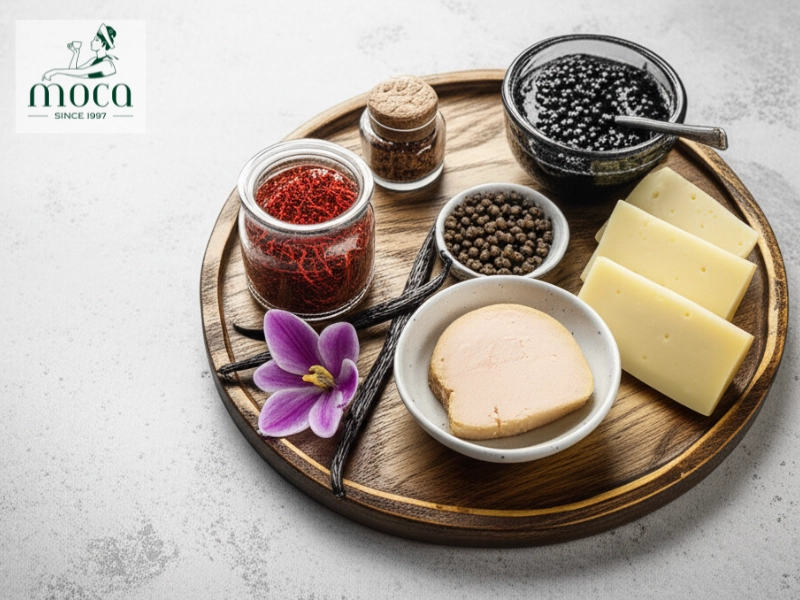
The alchemy of luxury — rare spices and iconic delicacies that define fine dining.
2. Criteria for selecting fine dining ingredients: The pursuit of perfection
The selection of fine dining ingredients is governed by uncompromising standards that ensure every dish meets the highest expectations of quality and experience.
Freshness: This is non-negotiable.
- Ingredients for a fine dining restaurant must arrive in impeccable condition, free from bruising, spoilage, or any sign of deterioration.
- Seafood should ideally be live or demonstrably fresh-caught, exhibiting clear eyes, firm flesh, and a clean oceanic scent.
- Vegetables and fruits must display vibrant colors, firm textures, and no signs of wilting or over-ripeness.
Quality: Beyond freshness, inherent quality is paramount.
- All fine dining ingredients must have a traceable, clear origin, ensuring food safety, adherence to hygienic standards, and often, superior flavor profiles linked to specific terroirs or appellations.
- There is a strong preference for organic, biodynamic, or naturally-raised ingredients, reflecting a commitment to purity and minimal intervention.
- For meats, quality is judged by factors such as consistent and abundant marbling (in beef), a pale pink color and fine grain (in veal), and a tender, succulent texture.
Sustainability: Responsible sourcing is an increasingly vital criterion.
- Priority is given to fine dining ingredients produced using sustainable methods that minimize environmental impact, such as line-caught fish or produce from farms practicing regenerative agriculture.
- Supporting local purveyors who demonstrate community responsibility and ethical practices is a core value in modern fine dining.
Uniqueness: The ability to offer a distinctive culinary experience often hinges on unique ingredients.
- Chefs actively seek out rare, novel, or artisanal ingredients for a fine dining restaurant that can differentiate their dishes and surprise the palate.
- Embracing seasonality is key, utilizing ingredients when they are at their absolute peak of flavor and freshness, celebrating the natural bounty of each period.
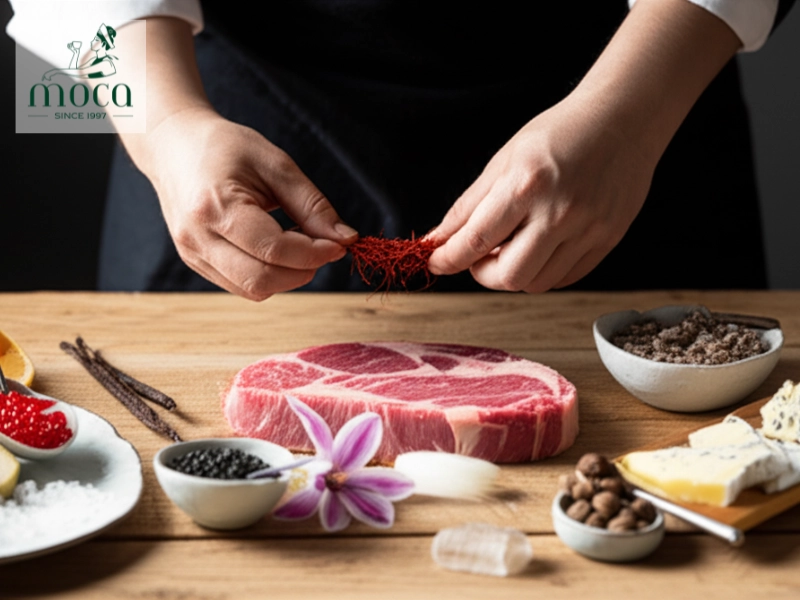
Pursuing perfection: selecting only the freshest, highest-quality, sustainable, and unique ingredients for an unforgettable fine dining experience.
Learn more: Unveiling Fine Dining History: From Origins to the Moca Dining Experience
3. The role of ingredients in the fine dining experience: A multi sensory symphony
Exceptional fine dining ingredients are the conductors of the overall gastronomic experience, influencing not just taste but also texture, aroma, visual appeal, and nutritional well-being.
Flavor: This is the most direct impact.
- High-quality ingredients for a fine dining restaurant inherently possess superior, more complex, and nuanced flavors. A sun-ripened heirloom tomato, for example, offers a depth of taste far beyond a mass-produced counterpart.
- The artful and harmonious combination of these premium ingredients creates a unique symphony of flavors on the palate, where each component contributes to a greater, more memorable whole.
Texture: The interplay of textures is crucial for a sophisticated dining experience.
- A variety of textures – crisp, creamy, tender, crunchy, smooth – adds layers of interest and prevents palate fatigue.
- The contrast between textures, such as a perfectly seared scallop with a crisp exterior and a meltingly soft interior, significantly enhances the appeal and complexity of a dish.
Color: We eat with our eyes first.
- The natural, vibrant colors of fresh, high-quality fine dining ingredients contribute significantly to the aesthetic beauty and allure of the dish.
- Harmonious and thoughtful color coordination on the plate stimulates the sense of sight, creating anticipation and whetting the appetite even before the first bite.
Nutritional Value: While indulgence is part of fine dining, health consciousness is also valued.
- Superior ingredients for a fine dining restaurant are often more nutrient-dense, providing essential vitamins, minerals, and beneficial compounds.
- A well-composed dish that achieves nutritional balance, drawing from a diverse range of high-quality ingredients, contributes positively to the guest's overall well-being.
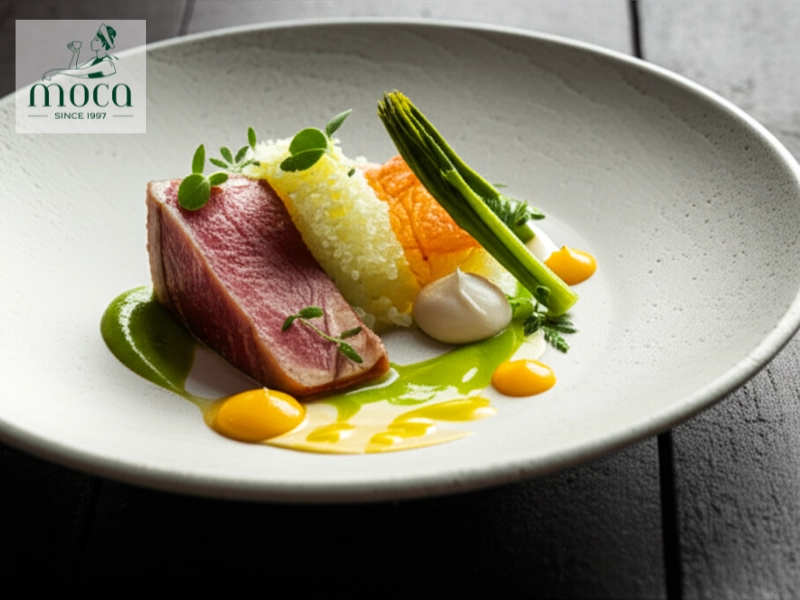
The essence of fine dining: a vibrant harmony of flavors, textures, colors, and nutrition crafted from exceptional ingredients.
Learn more: Fine Dining: Discover the Art of Elevated Cuisine
4. Introducing Moca Dining restaurant: Where ingredient integrity meets culinary innovation
Moca Dining stands as a testament to the profound impact of exceptional fine dining ingredients. Our philosophy is built upon the unwavering belief that true culinary artistry begins with the finest raw materials.
Moca Dining was established with a singular vision to offer an unparalleled dining experience where ingredient purity and culinary innovation converge. Our style is a sophisticated fusion of classic Vietnamese culinary traditions and contemporary international fine dining techniques. The atmosphere within our ancient French architectural setting is one of refined elegance and intimate comfort.
At the heart of Moca Dining is our rigorous selection process for all ingredients for fine dining restaurant use. We partner with reputable, often local, suppliers who share our commitment to freshness, quality, and sustainability. Every item, from the simplest herb to the most luxurious protein, is carefully vetted.
Our menu is a dynamic showcase of what can be achieved when exceptional fine dining ingredients are placed in the hands of skilled chefs. We offer a harmonious blend of Vietnamese-inspired creations and globally influenced dishes, always prioritizing the integrity of the core components.
Our chefs are masters of their craft, possessing deep knowledge of ingredient characteristics and advanced preparation techniques. Their experience allows them to transform premium fine dining ingredients into culinary masterpieces.
The historic charm of our ancient French architecture provides a unique and inviting ambiance, creating the perfect stage for an unforgettable dining experience centered around exquisite food.
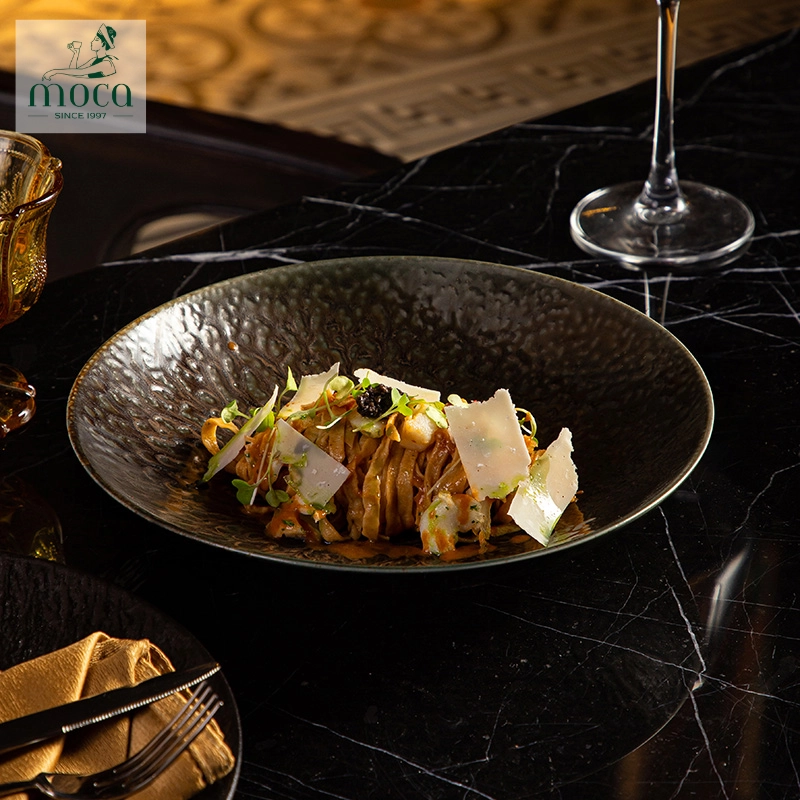
Where exceptional ingredients meet culinary mastery — Moca Dining redefines fine dining with timeless elegance and innovative flavors.
The exploration of fine dining ingredients highlights their vital role at the heart of culinary excellence—they are the soul of every dish, shaping its flavor, texture, and overall impact. At Moca Dining, we are deeply committed to this philosophy. By honoring the integrity of each ingredient, we honor the essence of fine dining itself. We warmly invite you to make a reservation and experience Moca Dining, where every dish is crafted with the freshest, most distinctive, and thoughtfully sourced ingredients—offering a culinary journey defined by quality and care.







